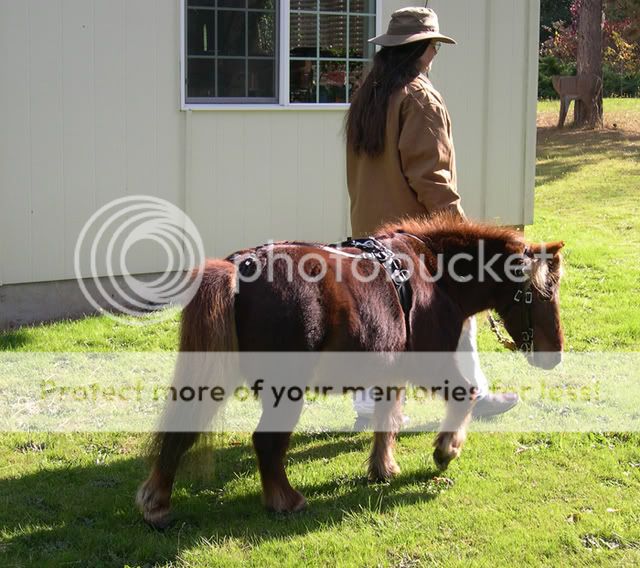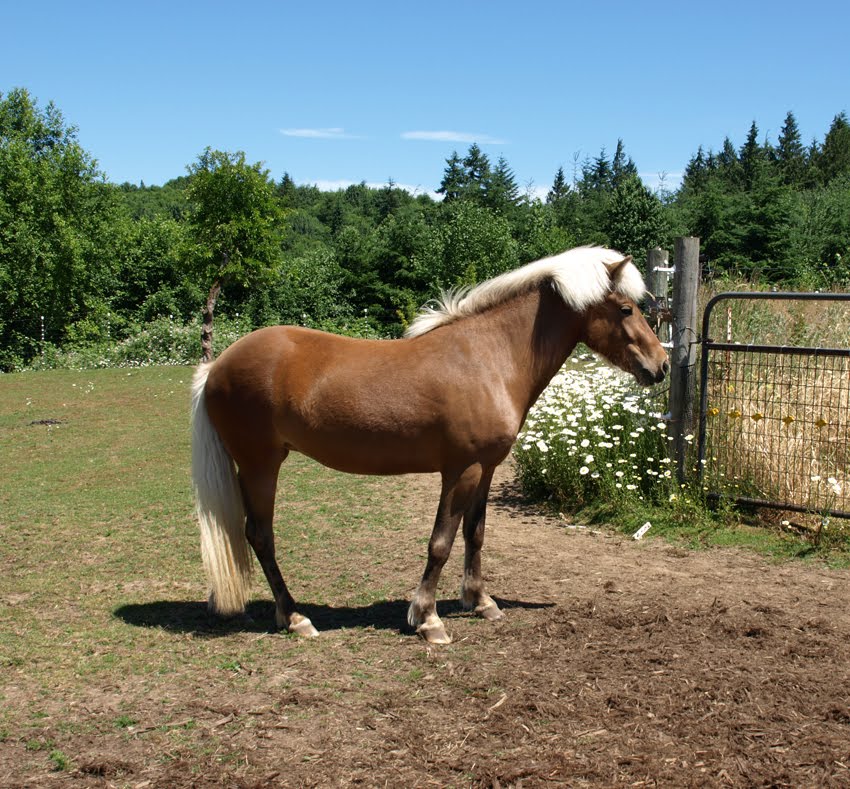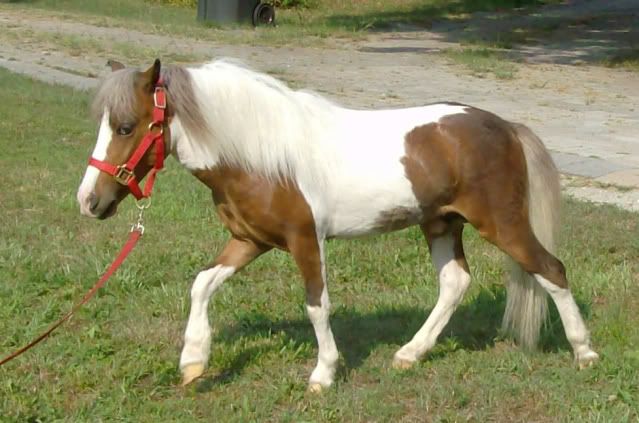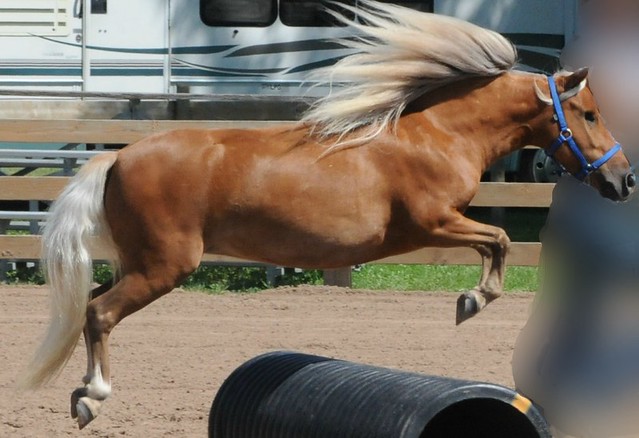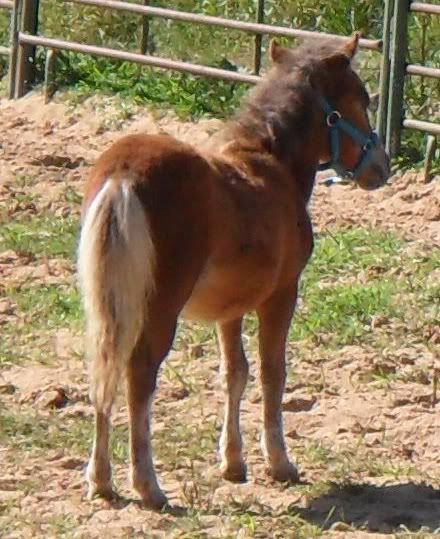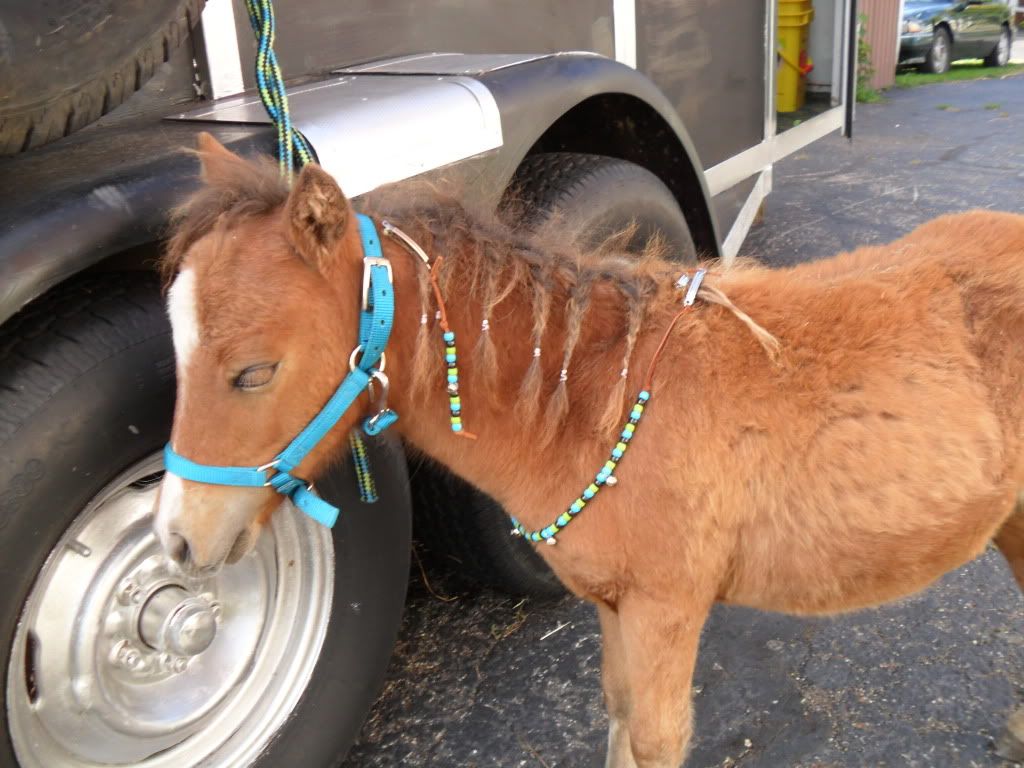Modifier genes include: bay, flaxen, grey, sooty/smutty, and mealy/pangare. Modifier genes also work in conjunction with base coat color and create different visual results depending on the base coat color and other genetic factors.
Bay modifier: As was described earlier bay, or the agouti modifier, only affects the black base coat. The body of the horse is brown, with the black restricted to the points, mane and tail. Bays come in a wide range of color including blood/red bays, and very dark black bays.
Champagne: The champagne dilution effects both black and red base coats, and is a simple dominant. This is also a relatively new genetic discovery, and as such is still being studied. Common traits of the champagne dilution include: amber, green, or blue eye color, pink to a light brown colored skin, often with freckles, dilution of the coat color, and a metallic sheen to the coat.
On a red base coat creates gold champagne: golden body color with a flaxen mane and tail, often mistaken for palomino.
Flaxen modifier: The flaxen modifier is not as yet completely understood. It is believed that the flaxen modifier only affects horses with red base coats, and it is also believed to be recessive (which means that both parents must pass on the gene for it to be expressed). When it is expressed, the flaxen modifier caused a lightening of the mane and tail ranging from golden brown to pure white.
Sooty/Smutty modifier: The sooty modifier works on both red and black based horses by darkening random parts of the body, but most often darkens the towline of the horse affected. However, it also affects the shoulders, hips and face of some horses. In some horses to sooty modifier is expressed to such a point that the horse becomes so dark its true color is almost completely masked.
Mealy/Pangare modifier: The mealy modifier causes a lightening ranging from tan to white in the following areas: on or around the muzzle, around the eyes, along the underside of the belly, in the flanks, on the buttocks and behind the elbows.
Many horses express a combination of more than one modifier or dilution-gene creating both a beautiful coat, and an intriguing puzzle as science, breeders and horse lovers alike strive to solve the mystery that is color genetics!
